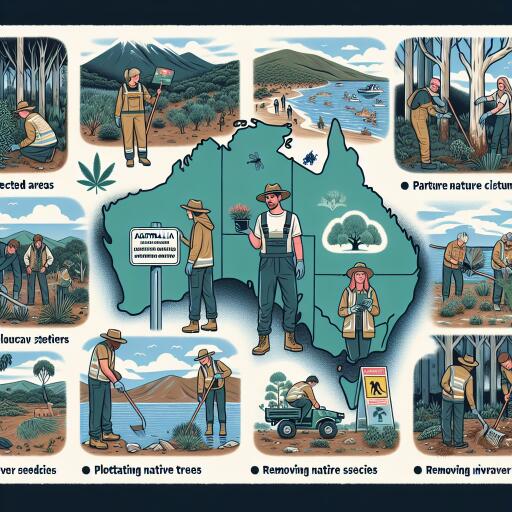
Philanthropy can help Australia meet land-protection targets
In a groundbreaking move for conservation, an undisclosed philanthropist has donated a staggering $21 million, setting the stage for the creation of a new national park in outback Australia. This substantial financial backing facilitated The Nature Conservancy’s collaboration with the Queensland government to secure the Vergemont cattle station. Spanning 300,000 hectares, this area is a sanctuary for the endangered night parrot among other species, marking a significant step towards safeguarding Australia’s unique biodiversity.
Australia’s commitment to the global “30×30” initiative, aiming to conserve 30% of its land and oceans by 2030, underscores the urgency of expanding protected areas. Currently, with 22% of the nation’s landmass under protection, the task ahead involves acquiring an additional 60 million hectares within six years. This ambitious goal illustrates the critical role of philanthropy in bridging the gap in conservation financing, showcasing instances like the Vergemont acquisition as exemplars of successful partnerships between private donors and governmental efforts.
The Vergemont station’s procurement not only highlights the potential for significant philanthropic contributions to land conservation in Australia but also sets a new precedent for protecting ecosystems on a vast scale. Featuring the headwaters of the Lake Eyre Basin and providing habitat for the cryptic night parrot, this new national park represents a strategic advance in ecosystem preservation. This collaborative effort was made possible by leveraging an anonymous philanthropic donation alongside the Queensland government’s dedicated A$262.5 million fund for land acquisition, illustrating the powerful synergy between private philanthropy and public funding in achieving conservation milestones.
The model of combining targeted government budgets with philanthropic donations has proven effective in other regions as well, resulting in significant land purchases for conservation across Australia. These success stories include acquisitions in Queensland, New South Wales, and South Australia, where unique and vulnerable ecosystems have been preserved thanks to strategic partnerships. Noteworthy initiatives, such as the Wyss Foundation’s contribution to conservation and the efforts by Patagonia’s Holdfast Collective and Re:wild, showcase how dedicated funding and collaborative strategies significantly amplify conservation outcomes.
Historically, matching funds have catalyzed additional investments in conservation, with federal and philanthropic contributions leading to significant land acquisitions under Australia’s National Reserve System Program. The David Thomas Challenge further exemplifies how matching-fund initiatives can mobilize substantial resources for conserving critical habitats and biodiversity across the nation.
Despite a recent surge in Australian philanthropy towards environmental causes, meeting the country’s 30×30 land protection targets requires an escalated effort from the government to attract and leverage private and philanthropic investment. While the Australian government has pledged $25 million to stimulate private and philanthropic contributions towards this goal, experts argue that a more substantial national land acquisition fund of $5 billion is essential to drive meaningful progress towards the 2030 target. Additional support for Indigenous Protected Areas, conservation covenants on private land, and the protection of public land are also deemed crucial for achieving this ambitious goal.
As Australia approaches the Global Nature Positive Summit, with the aim of addressing the $700 billion annual biodiversity financing shortfall, the moment is ripe for announcing dedicated conservation funding initiatives. Emulating the Queensland Government’s example could set a new standard for ambition in conservation funding, creating conducive investment conditions for philanthropy to flourish in land protection efforts. The journey towards Australia’s 2030 conservation goals underscores the transformative power of philanthropy in safeguarding the planet’s biodiversity for future generations.





Leave a Reply